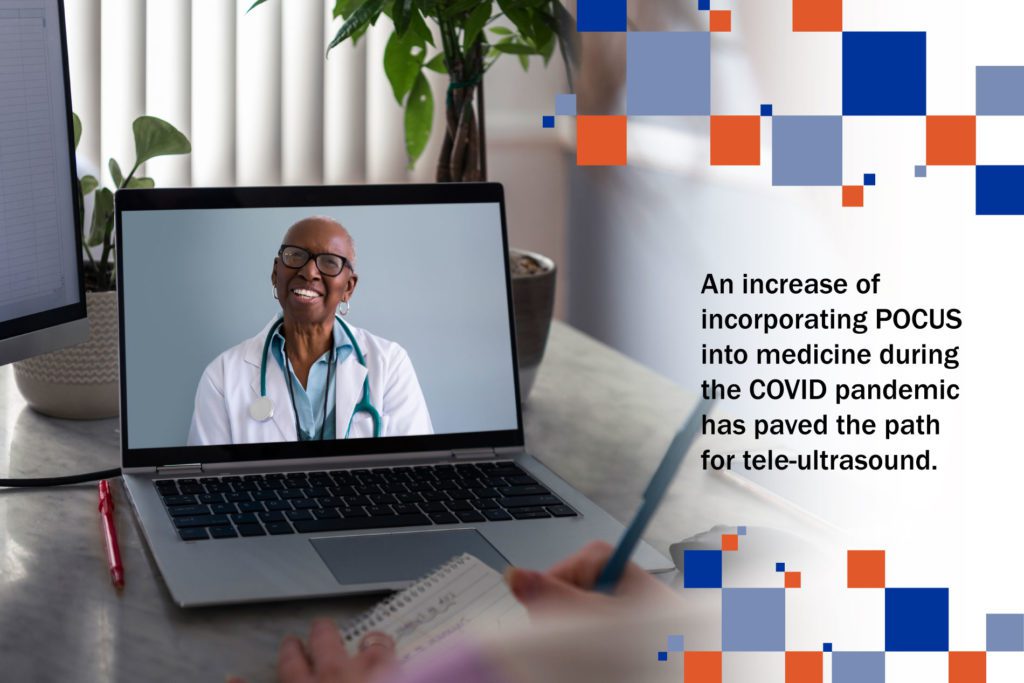The coronavirus (COVID-19) pandemic has reshaped the reality that we live in from how we socialize to our world of remote work. Another facet of life redesigned as a result of COVID-19 is the landscape of healthcare and medicine.
“The remote delivery of healthcare services,” or telemedicine began as a healthcare delivery form in the late 1960s. According to an article published in the International Journal of Environmental Research and Public Health, telemedicine technology was implemented to fulfill the needs of the National Aeronautics and Space Administration (NASA) and the Nebraska Psychology Institute. While it is not a new practice, physicians and patients alike have seen a spike in its use since the pandemic began.

Telehealth’s Transition: Pre-COVID to Now
A recent Focus on POCUS™ episode featuring Dr. Barry Ziring explored telemedicine and tele-ultrasound’s current discourse and how the two overlap In the conversation, a clear distinction was made between how telehealth is being utilized today, compared to our pre-COVID medicine.
Dr. Ziring explained a drastic change within the healthcare field, “both in the volume of telehealth visits that we do and the attitudes of both the providers and patients who are using it.”
Annually, the practice Dr. Ziring works in does approximately 40,000 visits and before the pandemic, he estimated they were conducting around 200 telehealth visits. When the lockdown began, a drastic shift occurred. Roughly 50% of patient visits were performed remotely, and only a small number of patients attended the office in-person. As physicians and patients alike have adjusted to the new circumstances, the practice runs at about a 70-30 ratio with in-person and telehealth visits, respectively.
As telehealth has become more common in rural and urban settings, improved infrastructure and technology have allowed different subsets of telemedicine to emerge.
Overcoming the distance barrier with tele-ultrasound
Point-of-Care Ultrasound (POCUS) has grown exponentially in its use and benefits in recent years. A tool that allows for better care and faster answers; it has been integrated throughout the medical field and appreciated by patients and healthcare professionals alike. An increase of incorporating POCUS into medicine during the COVID pandemic has paved the path for tele-ultrasound.
Tele-ultrasound allows medical professionals to safely conduct an accurate ultrasound on patients even if they are not physically at the examination site. The article, Tele-Ultrasound in Resource-Limited Settings: A Systematic Review, explores its usage and the benefit it plays in improving global healthcare.
Although the barriers and the severity of them differ accordingly, rural and urban areas alike have both faced obstacles in providing the highest level of patient care possible. Around the world, ultrasound has proven to be a valuable resource in combating these issues and providing better care.
Consequently, while these hurdles have become even more pressing as a result of the unprecedented circumstances brought on by COVID-19, telehealth and tele-ultrasound have proven to be vital in continuing a higher standard of care.
Tele-ultrasound’s role in telehealth
Traditionally, at the forefront of barriers to utilizing ultrasound has been a lack of accessible training and, as a result, a limited number of trained physicians.
This issue is being addressed by medical schools and residency programs that are continually working to improve their curriculums by incorporating ultrasound education. Other resources outside of the traditional classroom also exist. The Point-of-Care Ultrasound Certification Academy™ provides numerous educational resources, as well as certification opportunities.
This increase in educational opportunities and technology improvements go hand-in-hand in creating the space for tele-ultrasound within telehealth practices. As tele-ultrasound becomes more linked within telemedicine, during our current era of COVID-19 and continuing beyond, Dr. Ziring expects it to have a monumental impact on a practice that is already proving to be instrumental during these historic times.
Ready to get started on your POCUS journey? Check out our many certificates and certifications here.
Looking for additional inspiration? Sign up for our POCUS Post™ newsletter to receive monthly tips and ideas.





















